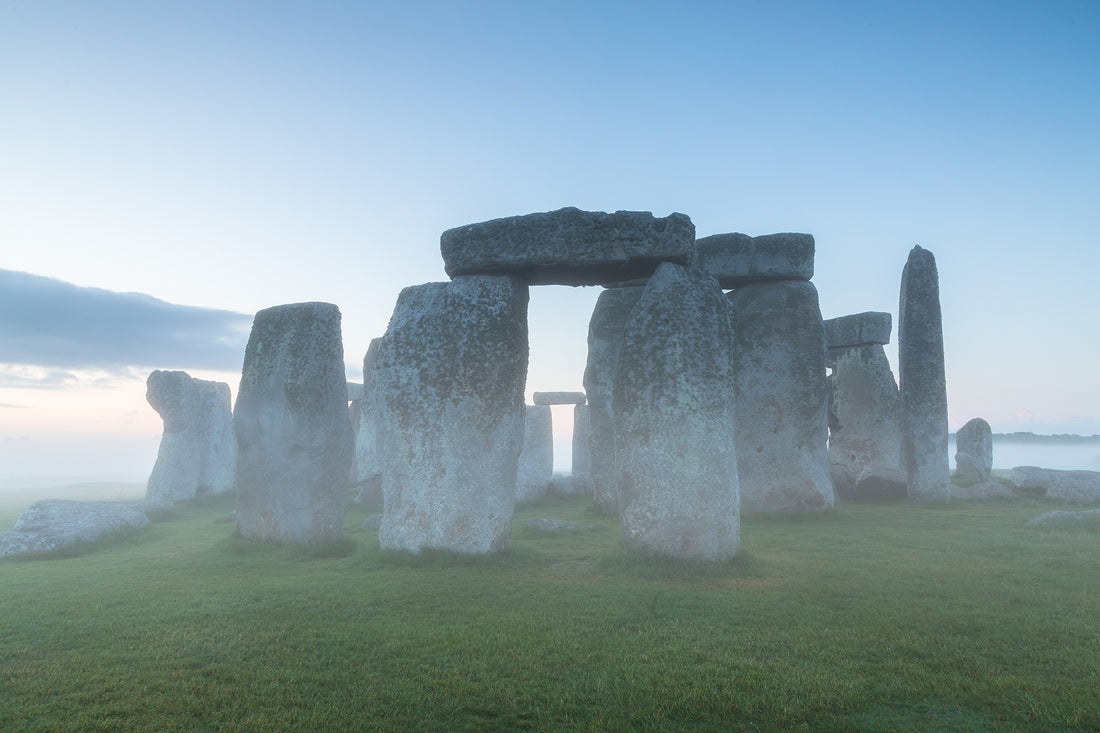
Why Is Granite Recommended For Headstone Use?
Share
Why Granite is the Optimal Material for a Headstone: Durability, Beauty, and Legacy
When it comes to choosing a material for a headstone, few options are as timeless, durable, and enduring as granite. For centuries, this natural stone has been revered for its remarkable strength and beauty, making it the preferred choice for memorials and monuments worldwide. In this post, we’ll explore why granite stands out as the optimal material for headstones and highlight some ancient structures made of granite that are still standing today, offering a testament to its lasting power.
1. Unmatched Durability
One of the primary reasons granite is favored for headstones is its unparalleled durability. Granite is an igneous rock formed from the cooling and solidification of magma deep within the Earth. This geological process results in a stone that is incredibly dense, hard, and resistant to wear.
Granite's resistance to weathering makes it an ideal choice for memorials, especially when considering its ability to withstand the elements over centuries. Unlike softer materials like marble, which can erode and discolor over time due to exposure to acid rain and environmental pollutants, granite maintains its structure and appearance for much longer periods. Even in harsh climates with extreme temperatures, moisture, and sun exposure, granite headstones remain intact, often outlasting other types of stone or materials.
2. Timeless Aesthetic Appeal
Granite is also prized for its aesthetic qualities. Available in a variety of colors, from deep blacks and grays to warm pinks and browns, granite can be polished to a high shine, giving the headstone a refined, sophisticated appearance. The fine grain of granite allows for detailed carvings, and intricate lettering can be achieved without sacrificing legibility over time. This makes it ideal for personalized inscriptions, ensuring that names, dates, and messages remain clear and visible for generations.
Granite’s natural veining and patterning also contribute to its beauty, making each headstone unique. Whether you prefer a sleek, modern finish or a more rustic, natural look, granite’s versatility allows for a wide range of design possibilities.
3. Symbol of Permanence and Legacy
Granite’s strength and resistance to decay have made it a symbol of permanence and legacy. It’s a material that endures the test of time, much like the memories and love associated with those we honor with a headstone. For families seeking to create a lasting tribute, granite offers peace of mind knowing that their memorial will remain intact for generations to come, preserving the memory of their loved ones.
4. Sustainability
Granite is also a relatively sustainable choice, as it is a natural stone that can be sourced responsibly. Many quarries adhere to environmentally friendly practices, ensuring that the extraction process has minimal impact on the surrounding landscape. Additionally, granite's long-lasting nature means that it doesn’t need to be replaced or maintained as frequently as other materials, reducing the need for additional resources over time.
Ancient Structures Made of Granite: Enduring Symbols of Strength
The durability of granite is not only evident in modern memorials but also in some of the world’s oldest and most iconic structures. Here are a few ancient monuments made of granite that have stood the test of time:
1. The Great Pyramids of Giza (Egypt)
While the core of the Great Pyramids is made from limestone, the outer casing stones were originally crafted from highly polished granite, particularly around the King’s Chamber. The pyramids, built over 4,500 years ago, still stand as one of the most awe-inspiring architectural feats of the ancient world. The durability of granite has allowed parts of these iconic structures to endure through millennia.
2. The Temple of Karnak (Egypt)
The Temple of Karnak, one of the largest religious complexes in the world, includes massive columns and statues made from granite. The most famous of these is the great obelisk of Queen Hatshepsut, which stands nearly 30 meters tall. Despite the passage of time, the granite structures at Karnak remain a marvel of ancient Egyptian engineering and craftsmanship.
3. The Obelisks of Ancient Egypt (Various Locations)
Granite was the stone of choice for the construction of obelisks, tall four-sided, narrow tapering monuments that have stood for thousands of years. The Egyptians quarried granite from Aswan and transported it to locations across Egypt and beyond. Today, many of these granite obelisks are still standing in places such as Rome, Paris, and Istanbul, having withstood centuries of weathering.
4. Stonehenge (United Kingdom)
Though many of the stones at Stonehenge are made from local sandstone, some of the smaller “bluestones” are made of granite. These stones, weighing up to four tons each, were transported from the Preseli Hills in Wales, around 150 miles away. The construction of Stonehenge began over 5,000 years ago, and the granite stones have survived through millennia of exposure to the elements, standing as a testament to the strength and lasting power of this material.
5. The Colossi of Memnon (Egypt)
These two massive granite statues, which date back to around 1400 BCE, are all that remain of the mortuary temple of Pharaoh Amenhotep III. Standing at nearly 20 meters tall, these statues were carved from blocks of granite quarried from Aswan and have endured for over 3,000 years, demonstrating the incredible durability of granite in monumental construction.
Conclusion
Granite’s exceptional durability, aesthetic versatility, and timeless quality make it the optimal choice for headstones. Whether in ancient structures like the Great Pyramids or modern memorials, granite has proven its ability to withstand the test of time. Choosing granite for a headstone not only ensures a lasting tribute to your loved one but also connects you to centuries of tradition and enduring strength. In a world where permanence often feels elusive, granite offers a lasting testament to both memory and legacy.
